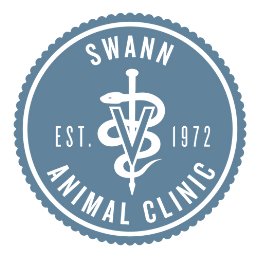I love the Texas Panhandle. I love the land and the people. My favorite time of year has always been Spring because it brings the rains. I LOVE watching the storms roll in and bless our land! But with those storms come some pesky little critters. That’s right… April showers may bring flowers, but they also bring mosquitos! So in honor of Spring getting close and Heartworm Awareness Week, we are going to talk about Heartworm disease! Heartworm disease affects both dogs and cats, but most commonly and more severely our canine friends. For this reason, I will be focusing on canine Heartworm disease. If you have any questions about feline disease, please feel free to contact your veterinarian.
Heartworm disease is caused by the parasite called Dirofilaria immitis. This worm has a pretty interesting life cycle, but we need to understand it so you can understand how your pet gets the disease. It starts with an infected dog. The dog will have microfilaria (the youngest stage of heartworm) in its bloodstream. A mosquito bites the dog to take a blood meal and ingests microfilaria. That young heartworm then matures inside the mosquito to the third larval stage. When that mosquito bites another dog, it infects the dog with the heartworm larva through the bite wound. The larva then matures in the dog’s blood over the next 4-5 months. The adult heartworm eventually makes it to the heart and then ends up living in the pulmonary arteries (lung arteries). The adult female then begins to produce more microfilaria and the process begins all over again.
What makes this parasite so dangerous to your pet is the location that the adult worm lives. As the adult worms get larger and larger, they begin to clog up the pulmonary arteries. This causes damage to the vessels and the lungs themselves. At this stage, your dog may have a cough, exercise intolerance, abnormal lung sounds, and/or abnormal breathing. As the number of worms increases, they can no longer all fit in the lungs, so the worms back up into the right side of the heart. Eventually, the worms will interfere with the valves in the heart and cause major issues with the heart and blood flow. When the disease process reaches this point, the dog foes into something called caval syndrome. This is an emergency that requires hospitalization and surgery. The dog will be severely lethargic, collapsing, and even have blood in its urine because the red blood cells are breaking apart inside the heart. Talk about an intense parasite!!
There are many ways for your veterinarian to diagnose this disease in your pet. The most common is something called an ELISA test. This is a quick blood test that detects an antibody (similar to a hormone) that the adult female worm releases. Your pet should have this test done once a year to catch the disease early before it gets to the point of harming your loved one. You can also look at a drop of blood under the microscope to look for the microfilaria. Your vet may also want to take a chest radiograph (x-ray) to look at the extent of the disease and damage to the heart and lungs. If your vet hears a problem when they listen to your pet’s heart, they may want to perform an echocardiogram (ultrasound of the heart) to look at the heart’s function. Once we diagnose your pet with heartworm disease, the treatment is rather extensive. Let’s talk about what that looks like.
Because heartworm disease is such a complicated disease, the correct treatment has many parts to it. The first thing that will happen is to start your pet on a heartworm preventative. While this may seem strange since they already have heartworms, we use these medications to kill the microfilaria and the young larval stages in the bloodstream. We will also start steroids and an antibiotic. The steroids help reduce inflammation in the lungs from the adult worms, and the antibiotic kills a bacteria that lives on the heartworm called Wolbachia. This bacteria has a symbiotic relationship with the heartworm, so when we kill the bacteria, it weakens the heartworm. After these medications are done, we will give another dose of heartworm prevention and the first injection of the drug that will kill the adult worms, melarsomine. We will start another month of steroids at this point. During this month, your dog will be on STRICT kennel confinement. This is one of the most important things! As the adult heartworms are dying, if your pet is active at all, the dead worms can cause a clot in the lungs known as pulmonary thromboembolism. This is fatal. After one month, we will give another injection of the melarsomine. We will give one final injection the next day. After this, there is another 6-8 weeks of STRICT kennel confinement. Finally, six months later, we will retest your pet to ensure that they are heartworm negative. WHEW!!! That sure is a lot to take in. The good news for you is that understanding all of that is my responsibility as the veterinarian. What I can tell you is that this is a serious disease and no fun for you or your furry loved one. So rather than having to treat for it, I would rather prevent it!
There are many options for you to pick from for heartworm prevention. There are oral and topical medications that are given monthly. There is also an injectable medication called Proheart. This is given in the vet’s office and lasts for six months. If you google heartworm prevention or go to your local pet store, you will see many over the counter options or homeopathic options. None of these are proven effective and will not protect your pet! It takes prescription-strength medication to prevent this terrible parasite, so please trust your veterinarian. These medications cost a fraction of the cost for the treatment and are MUCH safer, so be sure to get your pet started now!
This feels like a lot to take in, and it is! The good news is that we are always here to help. It is our desire to protect your fur baby! Have a great spring and rest easy at night knowing you are protecting your sweet babies!
About the Author
 Dr. Heritage Enevoldsen
Dr. Heritage Enevoldsen
Dr. Heritage Enevoldsen was born and raised in Amarillo, Texas. She had always dreamed of finding a job that would allow her to minister to and bless people, but also involve her love for animals, so being a veterinarian was just the right fit! She received her Bachelor of Science from Texas A&M University before graduating from Texas A&M College of Veterinary Medicine in May of 2017. Her goal was always to come back and serve the people of the Texas panhandle. Dr. Enevoldsen has a special interest in dermatology, surgery, and dentistry as well as client education. When she isn’t working at the clinic, Dr. Enevoldsen loves spending time with her son and husband, reading, and anything to do with the Fighting Texas Aggies. She is a dog mom to her pet, Mark, who is the most handsome mutt you have ever seen.
